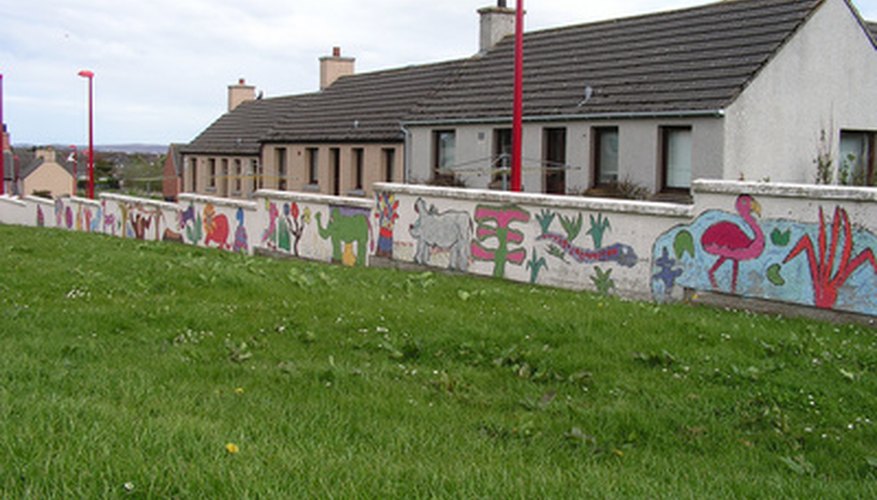A mural is a large painting that is painted directly onto a wall. Murals are often made to depict community historical events or to portray subjects that are important to the local population. Mural art is popular in Mexico and other Latin countries. Due to their large size, it is sometimes difficult to maintain proper perspective when designing murals. Projecting the image onto the wall can help with this problem.
Project the image onto the wall using an art projector. Art projectors are simple, fairly inexpensive tools that reflect and project any image that is placed in them onto the surface where the projection is pointed. The advantage of art projectors is that, unlike traditional overhead projectors, they will project opaque images and don't require transparencies.
- A mural is a large painting that is painted directly onto a wall.
- Art projectors are simple, fairly inexpensive tools that reflect and project any image that is placed in them onto the surface where the projection is pointed.
Minimise parallax by centring the projector. Parallax is the distortion that happens when an image is projected onto a surface at an angle, making one side larger than the other. By placing the projector at the centre of the image and being sure that its beam is exactly perpendicular to the surface of the wall, you will remove problems with parallax.
- Minimise parallax by centring the projector.
- By placing the projector at the centre of the image and being sure that its beam is exactly perpendicular to the surface of the wall, you will remove problems with parallax.
Trace the images that are projected onto the wall using a felt tip marker. This kind of marker works well because its tip will conform to the rough surface of the wall and leave a legible line. Stand out of the way of the projection, so you aren't working in your own shadow.
Use a video projector in the same way that you would use an art projector. A video projector can be hooked up to a laptop computer, so you can project any digital images that you have on the computer. If working outside, work in the evening so the projected image will be brighter.
Take advantage of the abilities of the computer by modifying the image to suit your needs before projecting it. You can change tints and colours and even remove parts of the image through photo-imaging techniques.
Divide the image into smaller parts and project them individually if you are having problems with a single image. Sometimes a single image, fitted to the space you are painting, will cause the projector to be so far away that the image is blurry. Or, if you are working in a confined space, you may not be able to get the projector far enough away to make the image large enough. Dividing the image into sections on your computer will solve either of these problems.
